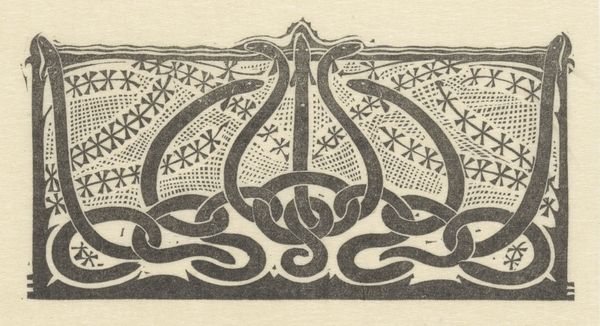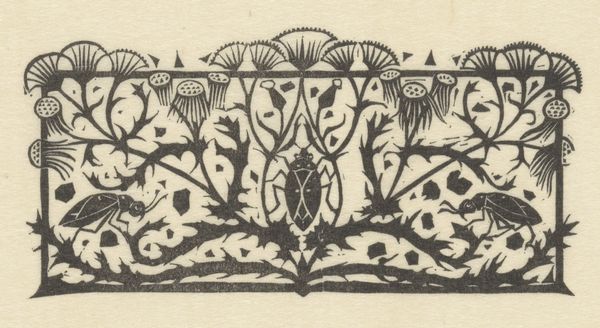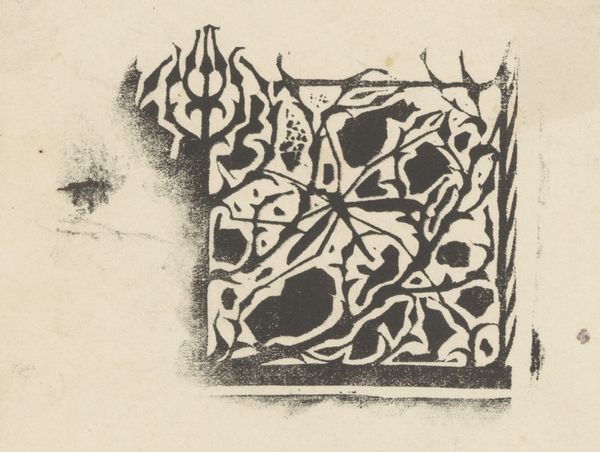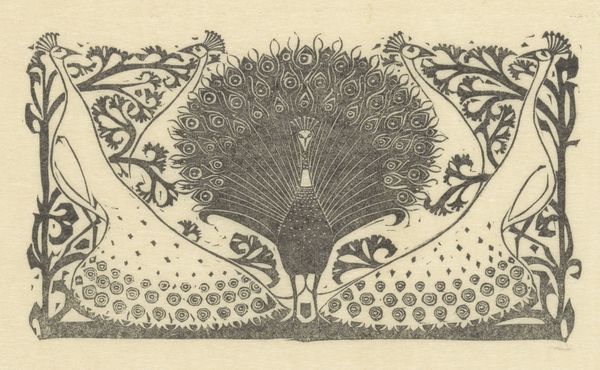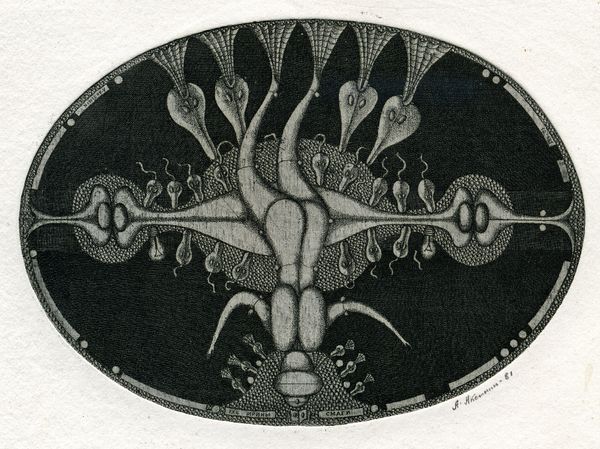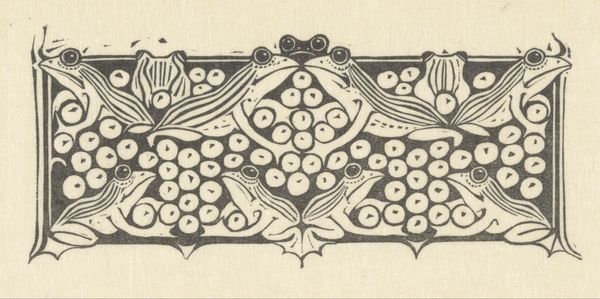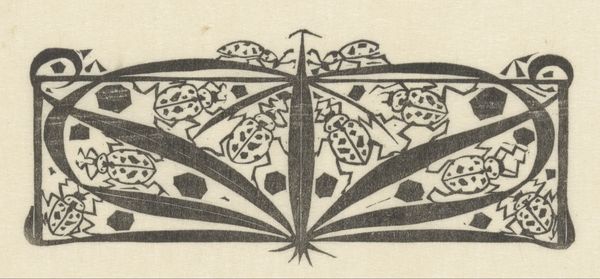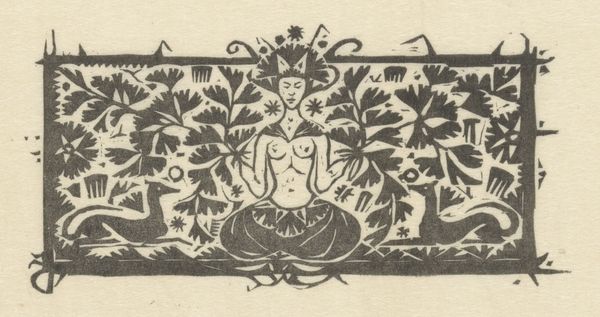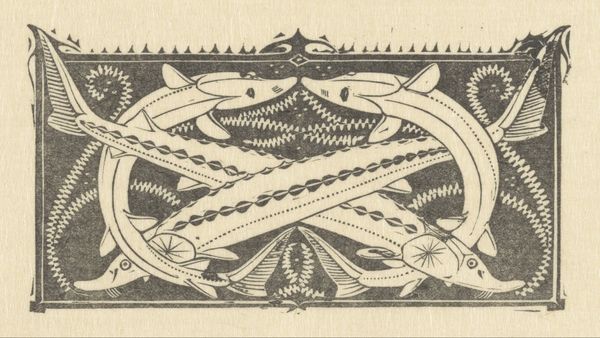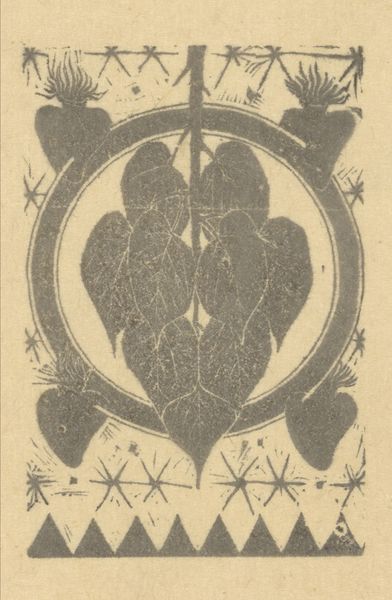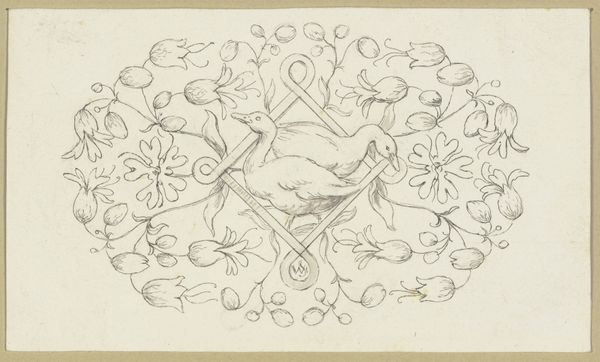
drawing, graphic-art, print, woodcut
#
drawing
#
graphic-art
#
art-nouveau
#
pen drawing
# print
#
geometric
#
woodcut
#
line
Dimensions: height 66 mm, width 113 mm
Copyright: Rijks Museum: Open Domain
Curator: This is Gerrit Willem Dijsselhof's "Titelhoofd met langpootmuggen en motten," or "Title Page with Crane Flies and Moths." It's dated between 1893 and 1927. Editor: It has such an intense graphic quality. Almost hypnotic in its symmetry and repetition. It looks both organic and rigidly composed at the same time. Curator: Precisely. Dijsselhof was deeply involved with the Art Nouveau movement. We see that immediately in the stylized natural forms—the insects, the plant life. But what’s compelling is how Dijsselhof intertwines naturalism with a real commitment to abstract geometric patterns. Editor: Thinking about his commitment, how might he view the insects as symbols of a broader socio-political context? Are there any intersections between gender, class, and race conveyed by this kind of symbolism in the print? Curator: That's insightful. While it might be difficult to pin down a one-to-one symbolic reading in this piece, Dijsselhof was concerned with transforming everyday environments, making the domestic sphere an artistic statement. In that context, we can consider this a meditation on beauty, even within what might be perceived as the mundane or the overlooked. The choice to highlight insects elevates their status, democratizing beauty, in a way. Editor: Absolutely. And looking closer at the materials—this is a woodcut, yes? That itself suggests a certain accessibility, a move away from the preciousness often associated with fine art. Woodcuts enabled broader distribution, bringing art into people's homes more easily. Curator: Exactly. He’s playing with the democratizing potential of the medium. But also consider the labor involved. Each line, each negative space, painstakingly carved away to create this intricate pattern. There's a dedication, a devotion even, to craft, that I think speaks to his belief in the power of art to ennoble. Editor: I appreciate that perspective, because that devotion is present within the image, regardless of what social class someone belongs to, what gender they identify as, or how much money they earn. It brings a new meaning to art beyond any surface level. Curator: Thank you, yes! Dijsselhof creates art to encourage thoughtful observation and reflection—to appreciate the smaller aspects and sometimes less-appreciated inhabitants of the natural world. Editor: It provides much food for thought regarding art's societal functions.
Comments
No comments
Be the first to comment and join the conversation on the ultimate creative platform.
